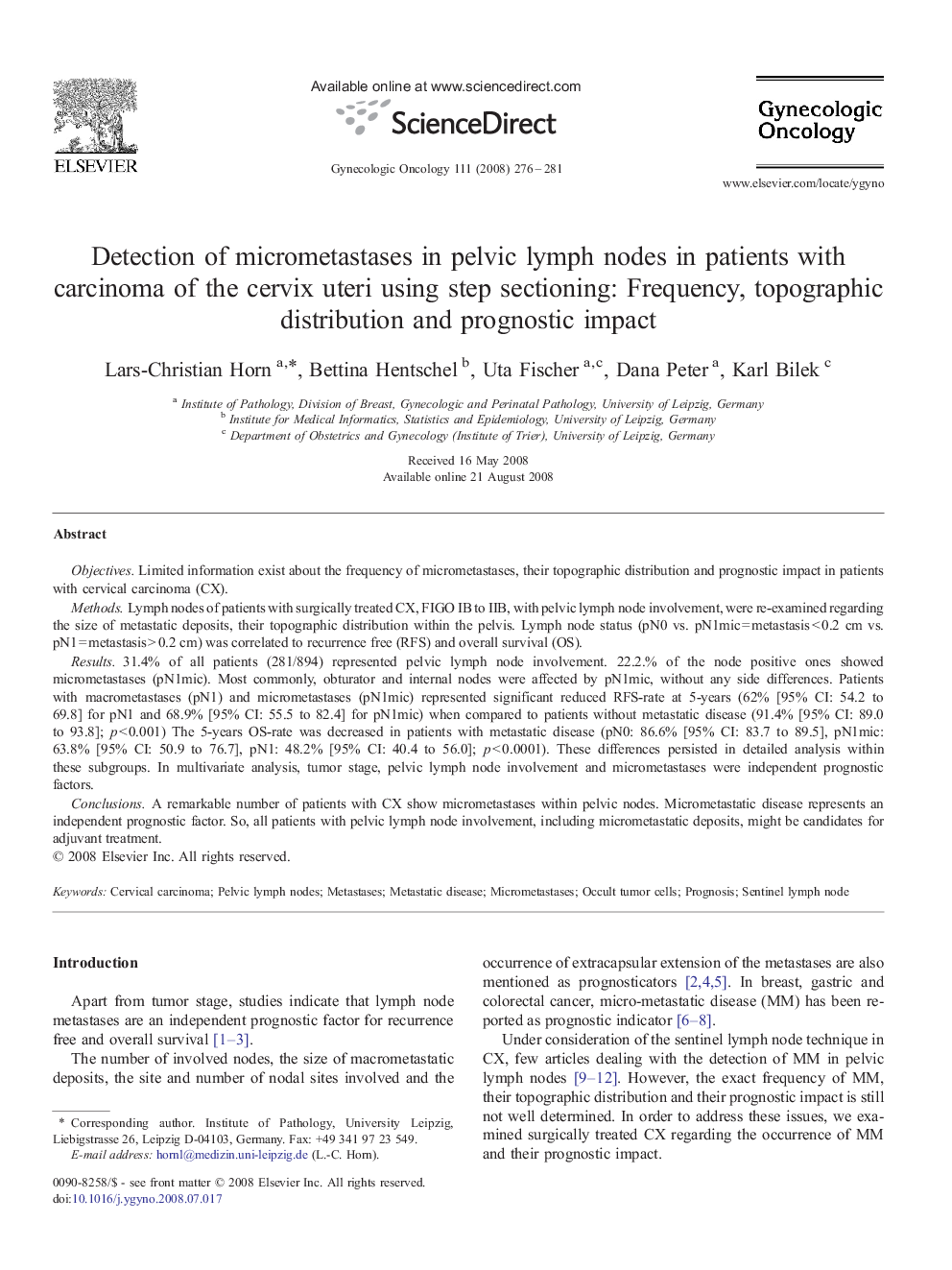| کد مقاله | کد نشریه | سال انتشار | مقاله انگلیسی | نسخه تمام متن |
|---|---|---|---|---|
| 6184003 | 1254199 | 2008 | 6 صفحه PDF | دانلود رایگان |

ObjectivesLimited information exist about the frequency of micrometastases, their topographic distribution and prognostic impact in patients with cervical carcinoma (CX).MethodsLymph nodes of patients with surgically treated CX, FIGO IB to IIB, with pelvic lymph node involvement, were re-examined regarding the size of metastatic deposits, their topographic distribution within the pelvis. Lymph node status (pN0 vs. pN1mic = metastasis < 0.2 cm vs. pN1 = metastasis > 0.2 cm) was correlated to recurrence free (RFS) and overall survival (OS).Results31.4% of all patients (281/894) represented pelvic lymph node involvement. 22.2.% of the node positive ones showed micrometastases (pN1mic). Most commonly, obturator and internal nodes were affected by pN1mic, without any side differences. Patients with macrometastases (pN1) and micrometastases (pN1mic) represented significant reduced RFS-rate at 5-years (62% [95% CI: 54.2 to 69.8] for pN1 and 68.9% [95% CI: 55.5 to 82.4] for pN1mic) when compared to patients without metastatic disease (91.4% [95% CI: 89.0 to 93.8]; p < 0.001) The 5-years OS-rate was decreased in patients with metastatic disease (pN0: 86.6% [95% CI: 83.7 to 89.5], pN1mic: 63.8% [95% CI: 50.9 to 76.7], pN1: 48.2% [95% CI: 40.4 to 56.0]; p < 0.0001). These differences persisted in detailed analysis within these subgroups. In multivariate analysis, tumor stage, pelvic lymph node involvement and micrometastases were independent prognostic factors.ConclusionsA remarkable number of patients with CX show micrometastases within pelvic nodes. Micrometastatic disease represents an independent prognostic factor. So, all patients with pelvic lymph node involvement, including micrometastatic deposits, might be candidates for adjuvant treatment.
Journal: Gynecologic Oncology - Volume 111, Issue 2, November 2008, Pages 276-281